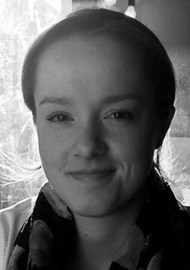‘Psychogenic vestibular disorders’, also known as ‘functional vertigo and dizziness’, are common causes of dizziness and balance difficulty. Although our understanding of their underlying pathophysiology remains incomplete, Drs Diego Kaski and Amy Edwards outline how early identification and positive diagnosis is key to long-term recovery.
What are psychogenic vestibular disorders?
‘Psychogenic vestibular disorders’ refer to a group of syndromes that present with vestibular-like symptoms, distinct from those caused by structural abnormality of the inner ear or central connections.
Recent changes in the classification of vestibular disorders emphasise the independent occurrence of psychiatric and functional conditions, now identified separately, and have replaced terms such as ‘somatoform’ and ‘psychogenic dizziness’ with ‘functional vertigo and dizziness’. The changes have also encouraged a shift away from defining functional conditions by the absence of structural pathology, and instead by the presence of distinct and specific symptomatology [1].
Several such syndromes have been described during recent decades, including ‘chronic subjective dizziness’ and ‘phobic postural vertigo’, each of which shares important core features of dizziness, unsteadiness and non-spinning vertigo. These common aspects have been unified to define a new diagnostic syndrome, termed ‘persistent postural-perceptual dizziness (PPPD)’, according to the Bárány Society and WHO [2].
PPPD
PPPD is typically characterised by persistent dizziness and perceived instability, worse in the upright position and in busy visual environments [3]. An acute ‘dizzy episode’ preceding these symptoms will be volunteered in many cases, and the disorder will usually emerge as this triggering event resolves. The most common precipitants are central or peripheral vestibular disorders such as BPPV (25%) and episodes of vestibular migraine (VM) (20%), with head trauma, panic attack and generalised anxiety disorders each accounting for a further 15%.
Figure 1. Bárány Society Criteria for the diagnosis of PPPD
A. At least one of: dizziness, unsteadiness, or non-spinning vertigo; present on most days for three months or more
-
Symptoms last for prolonged periods, but severity may wax and wane
-
Symptoms need not be present continuously throughout the entire day
B. Persistent symptoms occur without specific provocation, but are exacerbated by:
-
Upright posture
-
Active or passive motion, irrespective of direction or position
-
Exposure to moving visual stimuli or complex visual patterns
C. The disorder is usually precipitated by conditions that cause acute vestibular symptoms or difficulty with balance, but may develop gradually
- When precipitated by an acute or episodic condition, symptoms settle into the pattern of criterion A with trigger resolution, but may be intermittent before later becoming persistent
- When precipitated by a chronic syndrome, symptoms may develop slowly and worsen gradually
D. Symptoms cause significant distress or functional impairment
E. Symptoms are not better accounted for by another disease or disorder
Diagnosis requires the fulfilment of all five of the Bárány Society criteria (see Figure 1) [2] and is therefore reliant on taking a thorough history. PPPD is not a diagnosis of exclusion, however further physical, physiological, biochemical and radiological investigation may be required to fully evaluate alternative differentials. It is worth bearing in mind that PPPD can co-occur with structural vestibular and other neurological disorders. For example, VM and BPPV may precipitate PPPD without remission, resulting in acute vertiginous episodes on a background of persistent dizziness.
Pathophysiological mechanisms
The exact pathophysiology of functional vestibular disorders such as PPPD is not yet clear. However, the processes are known to involve normal physiological and behavioural responses to an acute postural threat, which become inappropriately sustained after its remission (see Figure 2).

Figure 2. Schematic overview of maladaptive pathophysiology and therapeutic options.
Reprinted with permission from Springer Nature [4].
The usual response to dizziness or high risk of falling is to adopt protective balance strategies. Normal individuals demonstrate stiffening of posture and a shift in sensory information processing to increase reliance on visual and somatosensory cues in such situations. Those who develop PPPD after an acute event show persistent high visual dependence, high anxiety and hypervigilance to balance sensations compared with those who recover well. Prior anxiety and neurotic personality (state and trait anxiety) appear to pre-dispose to this maladaptation [1].
Two possible means by which normal re-adaptation fails have been suggested. The first involves heightened sensitivity to slight discrepancies between anticipated and actual postural motion. This results in greater attention and effort in actively maintaining balance, in turn feeding hypervigilance and reliance on ‘high-risk’ strategies. The misperceived discrepancy between predicted and actual risk becomes reinforced and a vicious cycle is established. Normal balance regulation can be restored temporarily with distraction, which can therefore be used therapeutically in rehabilitation and is often reported as a coping strategy [3].
The second takes evidence from neuroimaging studies, which have demonstrated that activity and connectivity in brain regions that process visual, vestibular and spatial information are different between individuals with and without PPPD. The results suggest that a failure of cortical network (top-down) suppression of ascending postural information may result in persistence of the acute, high-risk postural behaviour [1].
Treatment
Treatment should start with patient education. It is important to explain to patients that PPPD is a common and well-recognised cause of chronic dizziness that can be treated successfully. It may also be valuable to demonstrate the reversibility of some symptoms using distraction techniques during physical examination.
“PPPD is not a diagnosis of exclusion, however further investigation may be required to fully evaluate alternative differentials”
Treatment options include: i) vestibular and balance physiotherapy, with the aim of reducing visual dependence and desensitising the balance system, ii) pharmacological agents, which may alter interactions between visuospatial, postural and emotional brain networks (particularly in patients with symptoms of vestibular migraine), and iii) psychological therapy, specifically cognitive behavioural therapy (CBT) to reduce hypervigilance and anxiety, and related behaviours. Combination of these three interventions according to the individual patient’s needs and preferences is recommended [3, 5]. Although good outcomes can be achieved despite a long history, early treatment is likely to confer long-term benefit, avoiding further maladaptation and behavioural engraining.
SUMMARY
-
Functional dizziness and vestibular disorders are now recognised as distinct from psychiatric disorders.
-
PPPD is a common and potentially reversible cause of chronic functional dizziness.
-
Diagnosis of PPPD is positive on the basis of clinical criteria determined by the Bárány Society.
-
With early diagnosis, patient education and appropriate treatment, clinical outcomes in functional dizziness can be successful.
References
1. Dieterich M, Staab J. Functional dizziness: from phobic postural vertigo and chronic subjective dizziness to persistent postural-perceptual dizziness. Curr Opin Neurol 2017;30:107-13.
2. Staab J, Eckhardt-Henn A, Horii A, et al. Diagnostic criteria for persistent postural-perceptual dizziness (PPPD): Consensus document of the committee for the Classification of Vestibular Disorders of the Bárány Society. J Vestib Res 2017;27(4):191-208.
3. Popkirov S, Staab J, Stone J. Persistent postural-perceptual dizziness (PPPD): a common, characteristic and treatable cause of chronic dizziness. Pract Neurol 2018;18:5-13.
4. Popkirov S, Stone J, Holle-Lee D. Treatment of Persistent Postural-Perceptual Dizziness (PPPD) and Related Disorders. Curr Treat Options Neurol 2018 13;20(12):50.
5. Vestibular Disorders Association. Persistent Postural-Perceptual Dizziness. 2014 VEDA.
https://vestibular.org/sites/
default/files/page_files/
Documents/PPPD_CSD.pdf
Last accessed March 2019.
Declaration of Competing Interests: None declared.







